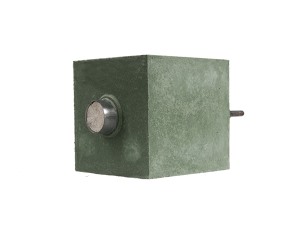Taking breathable bricks as an example, the basic knowledge of refractory materials is briefly described
For steel manufacturers and refractory industries, breathable bricks are very important and common refractory products; taking breathable bricks as an example, this paper discusses the properties of refractory materials from four aspects: thermal conductivity, specific heat capacity, refractoriness, and softening temperature under load. Basic knowledge.
Thermal conductivity of refractory material: Thermal conductivity represents the thermal conductivity of the material. The greater the thermal conductivity, the better the thermal conductor. The density of the ladle breathable brick is larger, and the thermal conductivity is correspondingly larger.
The specific heat capacity of the refractory material: the specific heat capacity represents the heat absorption or heat dissipation capacity of the object. The larger the specific heat capacity, the stronger the corresponding heat absorption or heat dissipation capacity. The specific heat capacity of the breathable brick is related to its baking and cooling time.
Refractory degree of refractory material: As mentioned in the previous article, it is a technical indicator, which combines the chemical composition of the material, the degree of dispersion, the proportion and viscosity of the liquid phase contained, etc. Refractory degree is an important indicator of refractory materials One, the refractory material needs to be able to withstand the high temperature of the use scene; for the breathable brick, if the temperature of the molten steel is too high, it will not only affect the life of the breathable brick, but even cause major accidents such as steel leakage.
Softening temperature under load of refractory material: It indicates the resistance of the material to the simultaneous action of high temperature and load. The compressive strength of refractory products is very high at room temperature, but after being loaded at high temperature, it will deform and reduce the compressive strength.

Related News
- Introduction of construction method of ramming material in intermediate frequency furnace
- How to choose the material of furnace lining
- The difference between rammer and castable
- Application direction of intermediate frequency furnace refining
- Introduction to the construction method of dry ramming material
- Do you know the production process and control points of breathable bricks?
- The application of argon blowing technology at the bottom of the intermediate frequency furnace
- Method for prolonging service life of intermediate frequency furnace lining
- In addition to diffused breathable bricks, there are those types of breathable bricks
- What are the advantages of coil cement
- What are the requirements for the production materials of breathable bricks?
- Do you know that it is very important to beat the ramming material of the intermediate frequency furnace?
- What is the difference between dry and wet mixing of intermediate frequency furnaces?
- How to maintain the crucible used in the furnace lining material? What processes need to be paid attention to!
- Analysis and Treatment Methods of Several Common Faults of Intermediate Frequency Furnace
- Refractory-Aluminum Refined Breathable Brick
- Learn the basics of refractory materials through breathable bricks
- 4 main reasons for the damage of breathable bricks for ladle
- Analysis of the methods to improve the physical and chemical properties of ladle breathable bricks
- What are the requirements for the production materials of breathable bricks?


